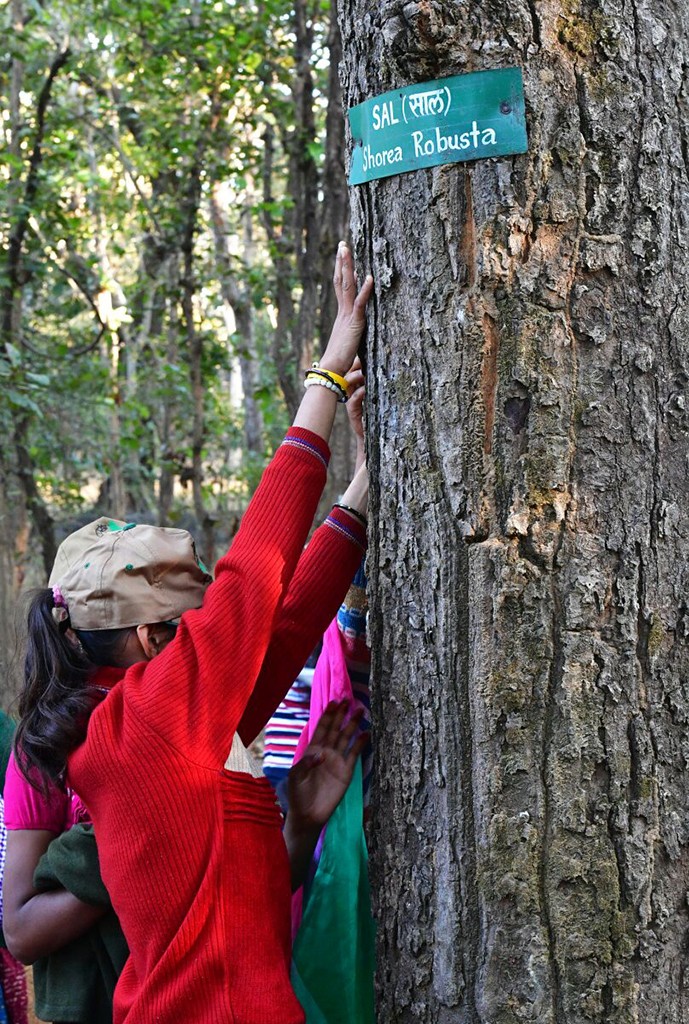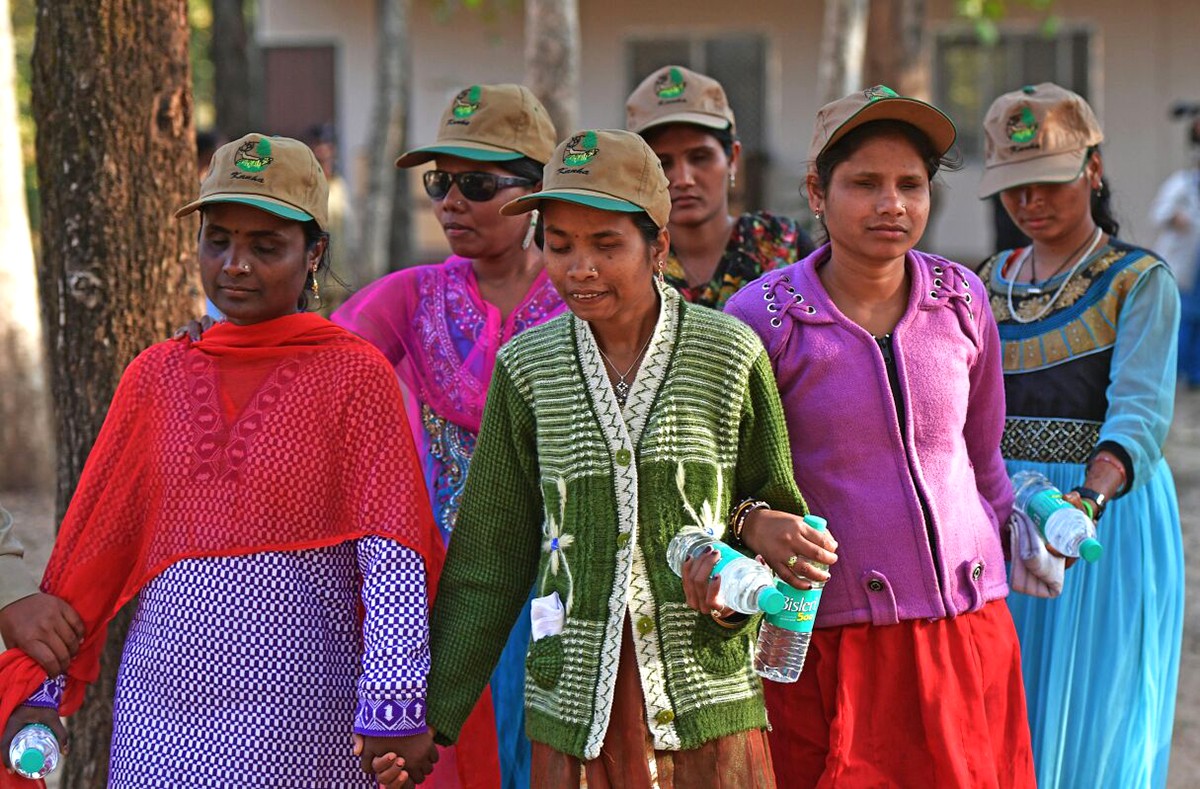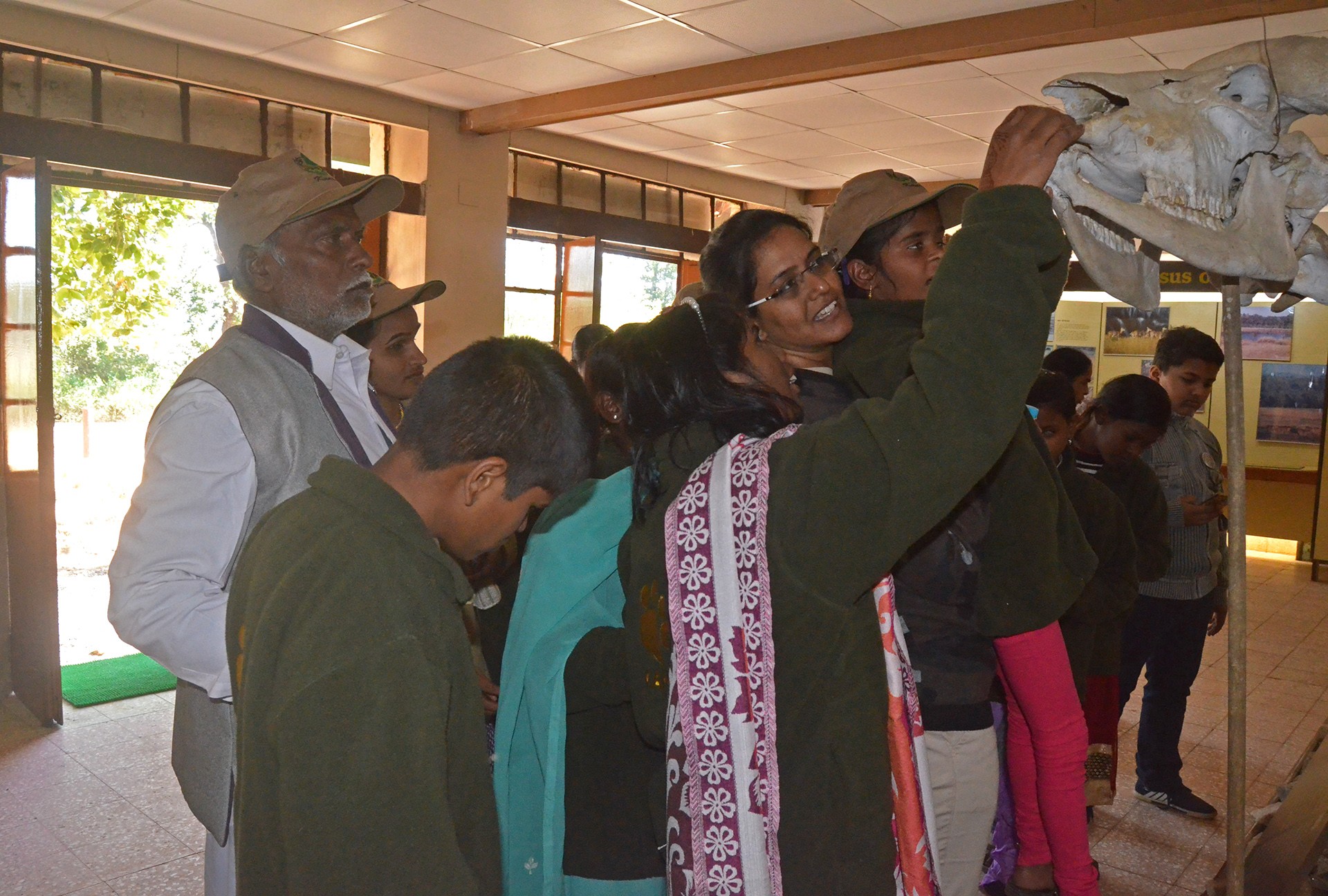It is exhilarating to be able to connect children to a forestscape, to watch them form a purely appreciative, non-transactional bond with nature. I have been blessed to be part of an initiative that gives me an opportunity to do just that.
Last Wilderness Foundation (LWF) has been involved in the Village Kids’ Awareness Programme since the summer of 2012. The programme involves working with students living in the buffer zones of tiger reserves like Bandhavgarh, Kanha and Panna to help them understand the correlation between denizens of the forest and the need to protect them. It helps also, to understand the behaviour of a tiger as that of a wild animal rather than only a source of economic loss for the villagers in form of livestock lifting (which happens more often than not).
However, despite working in this landscape for the past five years, our most surreal experience came this year, in the form of 23 visually-impaired students from the Ananya Manav Sai Samiti, Jabalpur. The enthusiasm shown by these students — complemented by the initiative taken by the Kanha Forest Department and LWF — made it possible for us to take them on a forest safari through Kanha National Park in January for the very first time.
Over the next day and a half, the children drank it all in: the early morning air heavy with birdsong, the calls and grunts of the grazing herbivores and the touch of an ageing sal tree.
They listened to the descriptions of the golden grasslands and the narrated ‘sight’ of a camp elephant throwing mud playfully on its back as it examined the meadows. The highlight for them, however, came in the form of a noisy Gaur as they heard it breaking off branches and chewing the leaves of a bamboo bush.
What was remarkable was the heightening of our own senses. We stopped at every rustle, at the energetic crashing of langurs through the canopies and waited to examine the strong ‘mahul’ creeper, tracing the patterns on the leaves with our fingers, its softness delighting the students, making them shudder with excitement.
Driving in the forest, the students noticed how some parts were relatively cooler. On being told that it was a mix of meadows and dense forest, the students put out their hands to examine the drop in the temperature and exclaimed excitedly that they could hear the streams in the parts of the forest that were coolest. “Does Kanha have a lot of hills? Has the vegetation changed? Do tigers live in such hilly regions?” asked the students as we drove on an incline. We struggled to keep pace with their intelligence and superior vision.
At the Kanha Interpretation Centre, everyone's excitement was almost palpable as we introduced them to the different skeleton structures of animals. They carefully examined the diverse shapes with their hands, Blackbuck antlers emerging as the clear favourite. “Kitna sundar hai! (It's so beautiful!)” they exclaimed; gingerly wrapping their fingers around the ridges in the antlers. Loud gasps of admiration echoed through the museum as they came in contact with the teeth of the wild boar. “Baap re! bahut pene hain! (How sharp these are!)” As they tried to squeeze their hands into the embossed structure of a tiger’s pugmark, to understand the difference between male and female, all they could murmur in excitement was how beautiful the animal must be.
The students’ happiness knew no bounds when they had an opportunity to meet the camp elephant, thanks to the Forest Department. They enjoyed the slight breeze caused by the flapping of its large ears and clung to us, shivering every time it moved. They touched the pachyderm’s wrinkled skin reverently, saying it was the best thing they had ever encountered.
The equaliser came, in my opinion, when we took the children to the dark room at the museum, for the sound and light show. This exhibits the nightlife of a forest with a recreation of a dimly-lit landscape inside a glass case with the sounds of different animals, climaxing with a tiger hunting a spotted deer.
As I struggled to adjust to the pitch dark, the students spoke admiringly of the atmosphere of the room, the number of steps they had climbed to get here and patiently waited for the show to begin. As the night life of the forest came to life with different calls, no one spoke, they were breathing it all in, shuffling slightly to the sound of rustling depicting animal movement and when it ended, they stood listing down all the things they had heard, clutching my hand in a fever of excitement, their reactions uncomplicated. I thought of the majority of tourists who visit the reserve every day, expecting the forest to deliver their money's worth and yet are never truly satisfied with the experience. These students took the experience holistically, step-by-step, marvelling with equal enthusiasm whether it was the call of a Golden Oriole or to the rough touch of a sal tree. I was overwhelmed in that room — albeit with my limited understanding of the lives of the children — and realised that sometimes happiness can be sought from the most uncomplicated of things, only if we allow it to be.
Watch the children enjoy their day out in the jungle.




